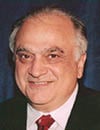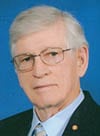SMART Transportation Division members are reminded that elections are scheduled to be held this autumn to fill the three-year Local officer positions described by the SMART Constitution’s Article 21B, Section 56.
Positions include President, Vice President, Secretary and Treasurer, Collector (where applicable) and the three-member Board of Trustees. In addition, any existing vacancies (except for those in the positions of Delegate or Alternate Delegate) should be addressed during these elections.
As per the Constitution’s Article 21B, Section 57, nomination meetings are held in October, with election tabulations conducted in November. Special instructions are provided below for Locals unable to hold a nomination meeting due to COVID-19 related restrictions.
Winning candidates assume their offices on January 1, 2021. If they are filling a vacancy, however, they take office immediately.
Candidates must garner a simple majority of valid votes cast to win election to any elective Transportation Division office. (A simple majority can be thought of as 50 percent of votes, plus at least one more vote.)
The process begins
For the Local’s Secretary or Secretary-Treasurer, the election process begins with an effort to update the membership roster, ensuring accurate addresses are on file for each member. Our Constitution’s Article 21B, Section 49, requires each member to keep the Local Secretary and Treasurer advised of his or her current home address. At the same time, U.S. Department of Labor regulations and the Labor-Management Reporting and Disclosure Act (LMRDA) require the Local to take steps to update addresses in advance of an election.
Members can update their address by contacting their Local Secretary, or can do so on the Transportation Division’s website.
Even if your Local conducts a floor election, where voting takes place at a physical location rather than by mail, it’s important that your address is up to date. Your Local Secretary (or Secretary-Treasurer, as the case may be) needs to mail a notice to all active members of the local to advise them, at least 15 days in advance of tabulation, that an election is to take place. The notice will indicate when and where voting will take place. (Postcards for this purpose are available for purchase from the Transportation Division’s Supply Department.)
If the Local is conducting its election by mail, the ballot itself must be mailed out at least 15 days in advance of the date of tabulation, as the ballot serves as the notice of the election.
Nominations
The Secretary must post a notice at least 10 days in advance of the October nomination meeting indicating when and where nominations for affected positions will take place. They need not mail this notice directly to members.
Nominations may be made by any member in good standing from the floor at the nomination meeting. Nominations do not require being seconded. Any member eligible to vote may self-nominate. If a member wishes to self-nominate or nominate someone else, but can’t attend the meeting, nominations can be entered through a petition. A nomination petition must state the name of the nominee, the position for which the member is being nominated, and must carry at least five signatures of members in good standing. No nominations can be accepted following the close of the nomination meeting.
When a nomination meeting cannot be held due to COVID-19-related restrictions, a notice of nominations must still be posted at all locations where the Local’s members report for duty a minimum of ten (10) days prior to the deadline for nominating petitions to be submitted. Instead of including information pertaining to the time and location of a nomination meeting, the notice should set a specific date and time whereby nominations will be closed, and must include the Local Secretary’s pertinent contact information along with instructions for submitting written nominations. In situations where nomination meetings cannot be held, it is permissible for the Secretary to accept nominations submitted in writing, via hand delivery, text, email, and/or USPS mail.
With respect to choosing a deadline for nominations, typically, this would be determined by the members present at a regular or special meeting of the Local. Where it is not feasible to hold such a meeting, the Local President, Secretary, and Treasurer should all agree on a nomination deadline that works best. As noted, the minimum mandatory notice for nominations is ten (10) days. However, given the circumstances, we recommend giving more notice. Most Locals choose a time period that is closer to thirty (30) days in advance.
If only one member is nominated for a position, that member can be declared elected by acclamation.
The scheduled elections held this autumn offer an opportunity to fill other vacancies which may exist. If the vacant position is a Local Committee of Adjustment (LCA) position, only members of that LCA are eligible to make nominations for the position and to vote in that election. In locals having more than one LCA for different crafts, the secretary will provide a separate ballot for all eligible voters of each craft working under the jurisdiction of the committee involved. Any member in good standing with seniority in one of the crafts represented by the LCA may be a candidate for an office in that LCA.
Eligibility
To be eligible to vote, all dues and assessments must be paid within the time frame specified by the constitution. Article 21B, Section 49, indicates dues are to be paid in advance, before the first day of the month in which they are due. Eligibility to make nominations or to be nominated is similar. This means, for example, if the nomination meeting is in October, the nominator and the nominee must have paid all dues obligations prior to October 1. To vote in November, the voter must have paid all dues obligations prior to November 1.
Those in so-called E-49 status are eligible to run for office, but they cannot make nominations and they cannot vote. If elected, acceptance of pay from the company or the union creates a dues obligation.
Elections
As previously noted, candidates must garner a simple majority of valid votes cast to win election.
When it comes to handling elections for the Board of Trustees, instructions on the ballot should be included above the candidates’ names telling the voter: “Vote for three candidates.” Each member of the three-member Board of Trustees must be elected by a majority of votes cast, a requirement which frequently results in the need for runoff elections. The rule of thumb in such runoffs is that for each open position, which must be filled, two candidates will compete.
For example, if nine candidates run for a position on the Board of Trustees, and 200 valid ballots have been cast and counted in the first round of the election, each successful candidate must receive at least 101 votes. If no candidate receives at least 101 votes, a runoff must be held.
The runoff would include two candidates for each open position. In the above example, this means the three candidates with the lowest vote totals are dropped from the ballot, and the names of six candidates appear on the runoff ballot. In the runoff, if only one candidate attains a majority of votes that means one of the three positions was filled, and there remain two Trustee positions to fill, with five remaining candidates. Of those five remaining candidates, the candidate with the lowest vote total would be dropped from the ballot, and another ballot would be issued with four candidate’s names (because there are two positions to be filled).”
More information
Members are encouraged to consult Article 21B of the SMART Constitution for information regarding elections. Unless an item within Article 21B directs you to a further stipulation outside of Article 21B, only the provisions found within Article 21B are applicable to Transportation Division elections. The Local election process is addressed directly by Article 21B, Section 57.
Election information and guidelines have been distributed to all Transportation Division Local Presidents and Local Secretaries, as well as to General Chairpersons, State and District Legislative Directors and Transportation Division International Officers.
Members can consult their Local officers to examine this information, or they can visit the Transportation Division’s Local Toolbox and click on “Elections.”
Special Circular No. 35 describes the constitutional provisions involved in the local elections this autumn, and the pamphlet entitled “How to Hold Elections for Local Officers” gives practical, hands-on election guidance and includes samples of nomination and election notices that can be posted. The leaflet entitled “Special Instructions Related to COVID-19” provides guidance when gathering restrictions are in place.
Local officer positions
The following is a brief description of the duties of the various Local officer positions.
The Local President presides at all meetings of the Local, enforces the provisions of the Constitution and bylaws of the Local and exercises general supervision over the Local’s affairs. The President ensures that Local officers respond to inquiries from the International, and with the Secretary and/or Treasurer, files all reports required by federal, state or local laws. The President may speak on any subject before the Local, but may not vote except, in case of a tie vote, casts the deciding ballot.
The Local Vice President succeeds the Local President and fulfills the remainder of the three-year term if the Local President resigns, retires, becomes incapacitated, dies, or for some reason cannot fulfill the requirements of the position. Also, if the Local President cannot attend a Local meeting, the Vice President presides at regular Local meetings.
In most Locals, the offices of Secretary and Treasurer have been combined. The Local Secretary keeps an accurate record of all Local proceedings, receives all communications, conducts correspondence and is in charge of the Local seal and Local records. The Secretary performs the duties of the Local Treasurer in Locals that do not provide for the separation of the offices of Secretary and Treasurer.
The Treasurer receives all monies due to be collected by the Local and provides receipts, except in cases where the Local maintains the office of collector. The treasurer holds and keeps secure all Local funds and is bonded. The Treasurer also keeps an accurate account of all receipts and expenditures of the Local on forms provided for that purpose. The Treasurer shall also remit all monies due the International to the General Secretary-Treasurer each month.
In a few instances, Locals of 50 or more members maintain the office of Collector. The Local Collector receives all money due the Local and provides receipts. Prior to the first day of each month, the Collector reports to the Local Treasurer all the money received during the current month and gives the amount collected to the Local Treasurer.
The Local Board of Trustees supervises the financial affairs of the Local. Upon approval by the Local, the Board has authority to rent, lease, or purchase property, office equipment or other necessary supplies. The Board meets in January of each year for the purpose of auditing the annual report of the Treasurer and verifying bank balances and cash on hand.
Questions?
There are many provisions not covered by this article, including those that address candidates’ rights and permitted means of campaigning. Those with election questions are urged to call the Transportation Division President’s Department at 216-228-9400. It’s always easier to address issues in advance than after the fact.



